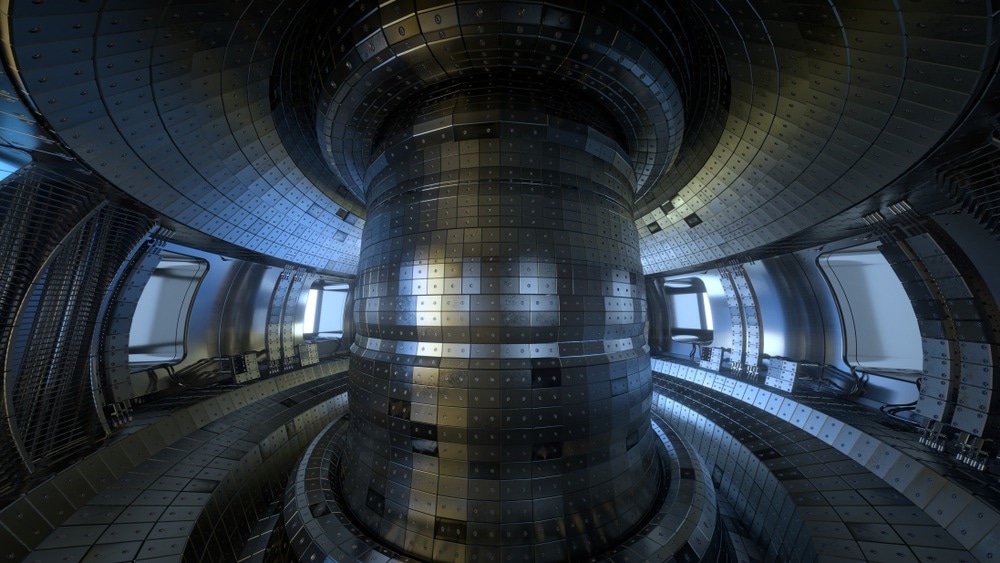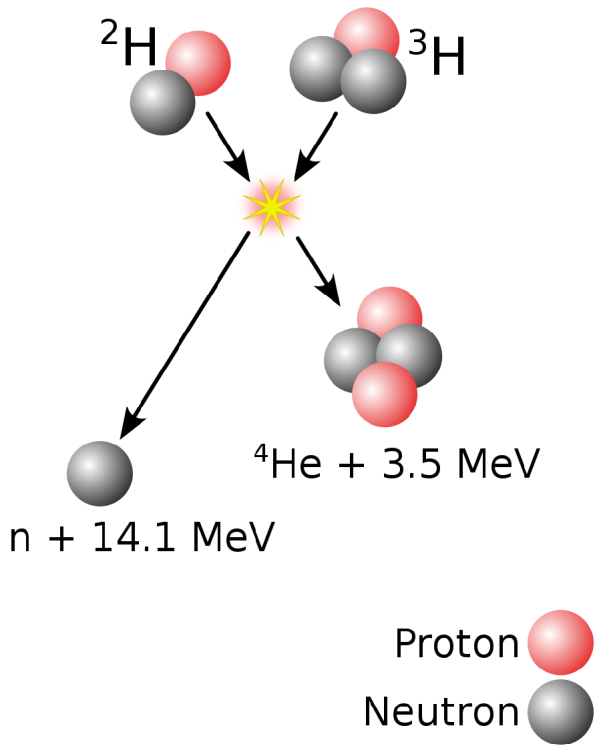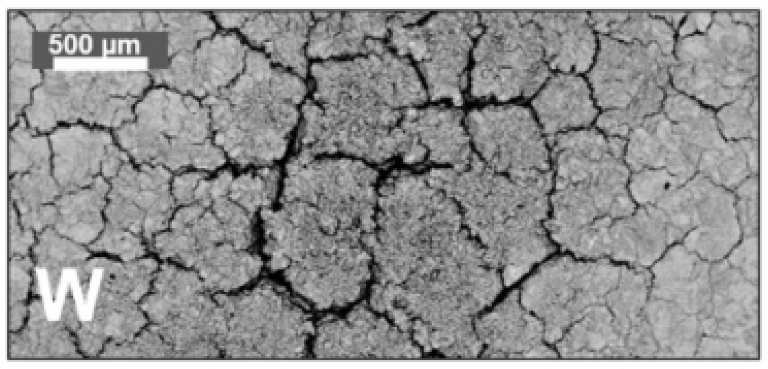Writing in the journal Materials, a research team from the University of Oviedo in Spain has presented a review of materials that will be employed in future nuclear fusion reactors.

Study: Materials to Be Used in Future Magnetic Confinement Fusion Reactors: A Review Materials. Image Credit: Efman/Shutterstock.com
Fusion: The Future of Nuclear Power?
Recent decades have seen advances in nuclear fusion technologies as a safe and clean alternative to current fission. In a fusion reactor, two nuclei are joined to form a heavier element, producing energy in the process. Fusion is an already well-established principle, providing power for stars like the sun. Protons are joined together in an event termed the proton-proton chain, which was first discovered by German physicist Hans Bethe in 1939.
Replicating this natural reaction is a highly challenging endeavor, requiring comprehensive research and the development of suitable technologies and materials. Hydrogen and its isotopes deuterium and tritium are of particular interest to fusion researchers due to the abundance of raw materials and the fact that it is the element used in stars for natural fusion.
Fusion is an exothermic reaction that requires the two elements to be in extremely close contact for the strong interactions to fuse them and release energy. Additionally, extremely high temperatures are necessary, facilitating the need to use plasma. Technologies and materials must be developed which can cope with extreme fusion environments and reduce the risk of catastrophic disaster.

Nuclear fusion reaction. Reprinted from Wykis/WikimediaCommons. Image Credit: Alba, R et al., Materials
The Paper
The new paper in Materials has presented an overview of the roadmap of materials that will be used in future fusion reactors. The two main classes of reactors currently under development are DEMO and ITER. Low-activation materials for first wall applications are discussed in depth, as well as plasma-facing materials and relevant diagnostic systems.
Material selection and their corresponding properties and characteristics are highlighted by the authors, and an outlook on future materials for this key energy technology is provided for the next phase of conceptual reactor design. Additionally, the design, objectives, and operation of the IFMIF-DONES facility are described.
Material Requirements
Candidate materials must be able to provide safe operation over a range of operating conditions. Design requirements include superior strength, toughness, and ductility, radiation resistance, resistance against embrittlement, resistance to fatigue cracking, and suitable chemical compatibility with other materials used in the reactor.

Surface damage with cracks induced by electron beam pulses. Image Credit: Alba, R et al., Materials
In nuclear fusion reactors, superheated plasma hotter than the sun’s core is used. Plasma-facing materials on the inside of the reactor must be able to withstand these extreme conditions. Damage mechanisms include T retention, H-bubble-induced fragility, degradation and activation, thermal defects, thermal fatigue damage in the joints between the heat sink and plasma-facing mechanisms, and high-velocity particle impact.
Tungsten has been widely proposed as a material for plasma-facing reactor components due to its superior thermal stability, high melting point, and low T retention. There are some drawbacks with this material, however, such as low-temperature and neutron radiation-induced brittleness. To overcome these technical material challenges, composites have been designed in recent years.
Smart alloys, tungsten fiber-reinforce tungsten, beryllium, beryllides, and diamond have been explored in recent research as plasma facing materials for use in fusion reactors.
Structural Materials
Structural materials must also meet specific demands, such as having a long lifespan, suitable mechanical and physical properties, and the ability to resist defects induced by radiation-material interactions. Reduced activation ferric martensitic steels have been widely proposed as structural materials for fusion reactors.
Breeder blankets are another key element of fusion reactor design. Good breeder blanket design ensures that the volumes of radioactive waste produced are limited in reactors. Various concepts have been explored, including lithium-lead ceramic breeders, water-cooled lithium lead breeders, helium-cooled pebble-bed breeders, helium-cooled ceramic breeders, and dual-coolant lithium lead breeders.
Promising Future Candidate Materials
Whilst there are several well-defined materials for nuclear fusion reactors which have been explored in depth in the design of current demonstrator projects, research into prospective material candidates which can improve upon current technologies is ongoing.
Amongst the growing body of research, several materials and technologies have been evaluated and discarded. The paper has highlighted some of the most promising material candidates, such as V-alloys, SiC composites, and oxide dispersion strengthened steels. Currently, research into DEMO reactors faces challenges with a lack of technologically ready materials, which is a major concern.
Diagnostic materials and components will play a key role in the development of efficient reactors, allowing enhanced control of fusion processes. Reliable sensors and instrumentation must be developed. Candidate materials include artificial diamonds, barium fluoride, fused silica, and single-crystalline materials such as molybdenum and rhodium.
In summary, there are several technical challenges associated with material design that must be overcome if nuclear fusion is to become a reality, but significant progress has been made in addressing these issues. The paper has provided a comprehensive overview of the current state-of-the-art and future perspectives in nuclear fusion reactor material research, helping to draw the roadmap for future projects.
Further Reading
Alba, R, Iglesias, R & Cedeira, M.A (2022) Materials to Be Used in Future Magnetic Confinement Fusion Reactors: A Review Materials 15(9) 6591 [online] mdpi.com. Available at: https://www.mdpi.com/1996-1944/15/19/6591
Disclaimer: The views expressed here are those of the author expressed in their private capacity and do not necessarily represent the views of AZoM.com Limited T/A AZoNetwork the owner and operator of this website. This disclaimer forms part of the Terms and conditions of use of this website.